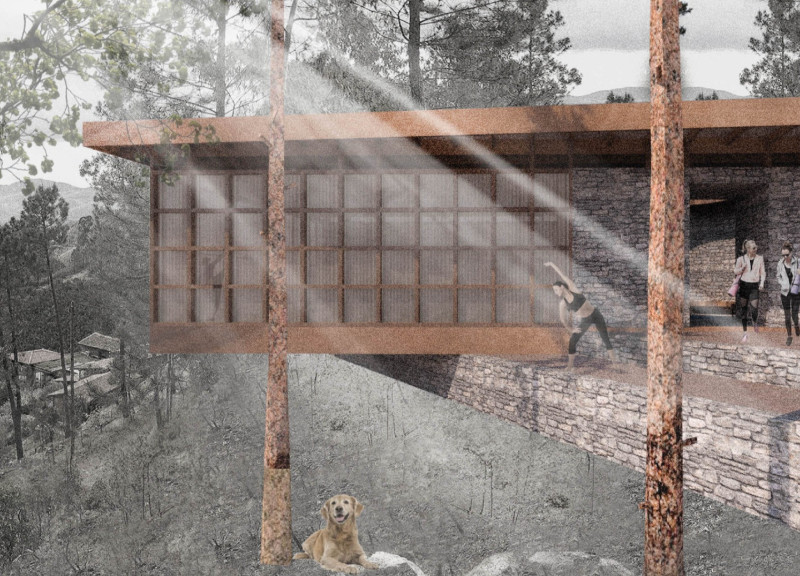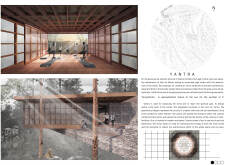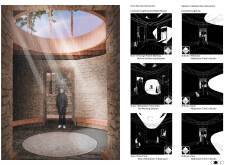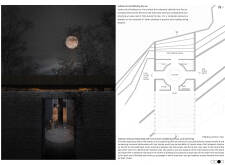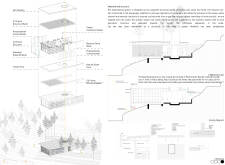5 key facts about this project
Yantra is located in Oleiros-Amieira, Portugal, above the Vale de Moses settlements. Designed as a retreat, it aims to create a space for spiritual connection and contemplation, with a focus on yoga practices. The concept is centered around the Surya Yantra, which represents the sun and shapes the overall design and experience of the building.
Design Concept
The design centers on the Surya Yantra, serving as both an architectural reference and a guiding principle. At the heart of Yantra is a skylighted courtyard that fills the space with natural light. This courtyard features geometric shapes symbolizing the circuits of creation, with the circle indicating the water element. Such elements enhance the connection to nature and nurture an engaging atmosphere for users.
Spatial Arrangements
Tranquility and solitude are crucial for this retreat. The back court is surrounded by stone walls, allowing openings only to the sky and hills. This design fosters a sense of isolation and reflection. The main yoga studio flows into a stone courtyard, where a rain pond creates a natural point of interest. This layout facilitates easy movement between indoor and outdoor spaces, encouraging users to connect with nature and practice mindfulness.
Structural Systems
The structure uses a combination of stone and timber, reflecting the topography of the site. This masonry system maintains continuity between inside and outside, while also offering flexibility in space. A carefully planned entry features a gap that invites users into a calming and introspective environment. The design encourages engagement with the building and the surrounding landscape.
Sustainability Features
Yantra is committed to sustainability, featuring a photovoltaic system that allows it to generate its own energy. Rainwater is collected for reuse, and natural ventilation is achieved through a void beneath the building. The local materials of timber and stone align with ecological practices while providing a connection to the region’s cultural heritage.
The facade reveals a series of openings that create an interaction with sunlight, emphasizing the relationship between light and interior space. This dynamic quality is essential for the yoga practices housed within, enhancing both the spiritual and physical experience.


